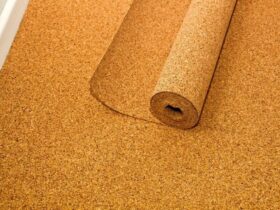The wall cladding with drywall using wooden rails is carried out when it is not possible to apply galvanized profiles. Rails are suitable if the room is dry enough, and there is no significant temperature difference in it. The tree is much cheaper than metal, so you will also save.
Start with small — we do a lot
DIY gypsum cardboard
For the upholstery of the walls with drywall, it is not necessary to dismantle the old finish. When purchasing rails, pay attention to the fact that the tree is sufficiently dried. Moisture content should be no more than 18-20%, and it is better to take soft rocks. In this case, the likelihood of a split of the rail at the place of spinning of the screw is very small.
By the way, now among the requests — but our Internet is all — you can find this: «Drilling walls with drywall». Honestly — any ways are good to achieve the goal, and such a global desire as repairs should not meet any barriers. But seriously, then such a trim on the Internet is a great many.
Before installing the rack frame, in any case, you need to treat antiseptics. Oil -based compositions are not suitable for this purpose, since they do not affect health in the best way. Reiki can be treated with antiseptics based on fluoride or silicon sodium fluoride. These substances easily penetrate the pores of wood, they are not smell and do not interact with metals.
Tools and materials that will be needed for work:
Reiki;
hacksaw or jigsaw;
sheets of wall drywall;
Mineral wool (if necessary);
punch or drill;
screwdriver;
Long and short wood screws;
dowel-gvo;
Long level.
What is a crate, and with what it is eaten?
Video on the assembly of the frame for trim from drywall with insulation
Cladding with drywall begins with marking. Direct lines are marked on the walls, along which the rails are screwed with dowels. And here the technology of the marking itself is very important. If you take a ruler or level, mark with their help the point at which the dowels will be driven in the future and drill them, you will definitely be mistaken. Why? Yes, because when installing the rails, you cannot fasten it with one hundred percent accuracy and at the same time not shift. The next hole can already “turn out” the self -tapping screw so that then you cannot reliably fix the rail and further set the level.
In order for everything to work out, they do this: one or two people tightly press the rail against the wall, and the third drills it through it, while reaching the wall itself. As a result, you will have ready -made holes in the guides, and the precisely marked areas on the wall in which you will need to make holes. Naturally, the diameter of the drill should not exceed the diameter of the screw in the dowel.
I need to mount the crate so that at least 7-8 cm width width will have to be on each edge of the drywall sheet.
It is also advisable to put an additional bar in the center of the sheet so that you can fasten the middle. The horizontal is also installed in the places where drywall adjacent to the ceiling and floor. Think in advance where shelves, cabinets, and t will hang on the walls. D., and in these places also install horizontal rails. Remember that nothing can be attached to drywall itself!
The most difficult installation is to set the perfect plane. To do this, use the level that is applied to the very first neighboring rails, and with the help of a screwdriver or screwdrivers, they regulate their distance from the wall. Wooden wedges are put to the places where the guide will do not fit against the wall under the screw, which can be made from scraps of the same rail. Further guides are exposed on a finished plane, which is created using the first two rails.
Satisfy the walls
We have reached the final stage and now you will learn how to overtake the walls with drywall. If it is supposed to equip thermal insulation, it will be necessary to place mineral wool or foam in the crate. Do not forget to cut holes under the sockets and switches in the drywall before installing sheets. Screw the sheets with short screws, the distance between which should be 30-40 cm. In the middle, sink self -tapping screws as deep as possible, but do not allow a breakthrough of paper.
It is rare that it happens that drywall does not have to be cut. If there is some place on the wall where a whole sheet does not get, you need to determine the size of this zone and transfer them to gypsum. At the same time, you may not have ready -made docking sections. In this case, they act in this way: with the help of linoleum or ordinary construction knife, manually remove the chamfer at the edges of the fit of the sections. This must be done carefully, since gypsum, not protected by a layer of paper, is very easily crumble.
After the walls are completely sewn up, they need to be treated with a primer penetration. After drying the composition, the seams are treated with gypsum plasterboard glue, glued with adhesive nets and putty. Please note that you need to put it and all the hats of the screws.












Оставить коммент.